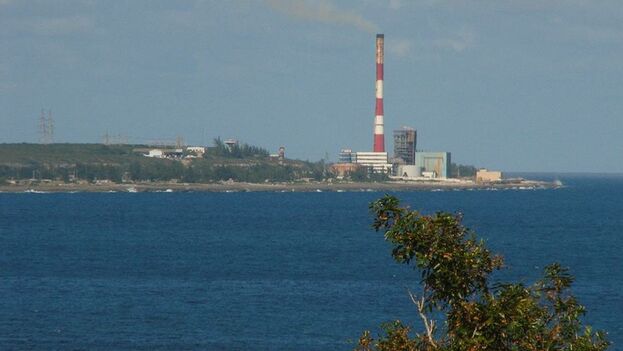
![]() 14ymedio, Havana, 7 March 2023 — Heat begins to squeeze the inhabitants of the Island, and the demand for energy grows faster than the generation recovers. This Tuesday, many Cubans choked on their breakfasts when Cuban television announced power cuts of up to seven hours in some parts of the Island.
14ymedio, Havana, 7 March 2023 — Heat begins to squeeze the inhabitants of the Island, and the demand for energy grows faster than the generation recovers. This Tuesday, many Cubans choked on their breakfasts when Cuban television announced power cuts of up to seven hours in some parts of the Island.
“Yesterday in Sancti Spíritus they turned off the electricity around 5 in the afternoon and turned it on around 8:30. The blackouts are taking off,” says the 14ymedio correspondent in the province, which is already enduring the first prolonged cuts.
A little later, the Unión Eléctrica (UNE) disseminated on its social networks the summary of yesterday’s activity, confirming 7 p.m. as the worst moment of the day, when there was a deficit of 541 MW. The company also published its generation forecast for today, when a deficit of 23% of electricity is expected in the evening, the time of highest consumption. The company expects an electricity generation capacity of 2,277 megawatts (MW) and a maximum demand of 2,860 MW.
In total, 237 MW of the generation produced in the thermoelectric plants are missing, since the following are out of service: unit 6 of the Máximo Gómez, in Mariel (Artemisa); unit 3 of the Ernesto Guevara, in Santa Cruz (Mayabeque); unit 2 of the Antonio Guiteras, in Matanzas; unit 5 of Diez de Octubre, in Nuevitas (Camagüey); Unit 2 of Lidio Ramón Pérez, in Felton (Holguín); and unit 5 of Antonio Maceo, called Renté, in Santiago de Cuba.
They are joined by three units under maintenance, one in Cienfuegos and two in the Renté plant, in addition to the deficiencies in the distributed generation. As for the generation, 933 MW do not work and 322 MW are under maintenance. In that context, the 20 MW provided by the Puerto Escondido unit and the 70 MW of the Renté plant, whose unit 5 enters at peak time, fall short.
Despite the lack of expectations that citizens already have in the face of the Government’s promises, some customers regret having believed the words of the Minister of Energy and Mines, Vicente de la O Levy, who proposed a maintenance program aimed at repairing the thermoelectric plants that would began in January, when the climate is cooler and therefore favorable, and end in May, to tackle the warm weather when demand skyrockets.
In January, the minister announced that with this plan the power cuts weren’t going to disappear, but they would be for only one or two hours compared to 14 to 16 hours last summer, when an unprecedented crisis led to a multitude of protests in different parts of the country. However, already in February, blackout periods began to be extended to three and four hours.
“And we thought that at this point the situation was going to be resolved with scheduled maintenance,” complains a disappointed user on the UNE networks.
Between February 13 and 22, from the center to the east of Cuba, there were four large blackouts that left half the Island in the dark, fueling the fears of the population and the feeling of grievance among the inhabitants of that area, who feel discriminated against. All the Turkish floating power plants that contribute to electricity generation are located in the west.
The authorities of the sector said that one floating plant was going to be sent to Santiago de Cuba to minimize the problem, since the location of all of them in Havana — due to the greater presence of companies and concentration of population — was catastrophic for the east of the Island, but the inhabitants continue to feel affected and report that the floating plant still hasn’t arrived.
“The party started again, to suffer with the Apagón [blackout] orchestra giving their annoying concerts all over Cuba. The same never-ending story,” a client bitterly quipped, in a play on words that recalls the traditional Aragon orchestra. Another is already ahead of the fear that exists on the Island: “I’m just saying that the heat is coming and they are fucking us again with 10 or 12 hours of blackouts.”
Translated by Regina Anavy
____________
COLLABORATE WITH OUR WORK: The 14ymedio team is committed to practicing serious journalism that reflects Cuba’s reality in all its depth. Thank you for joining us on this long journey. We invite you to continue supporting us by becoming a member of 14ymedio now. Together we can continue transforming journalism in Cuba.
